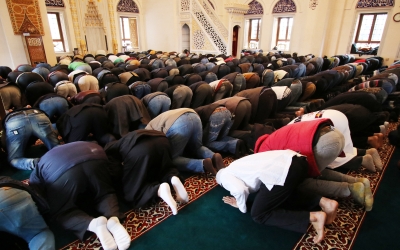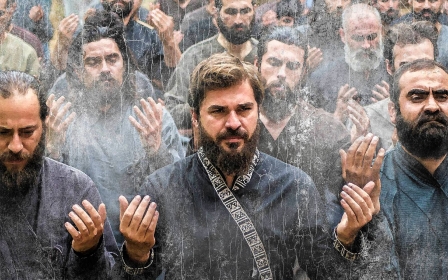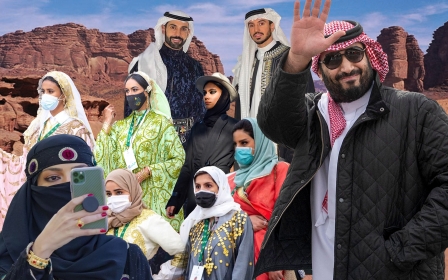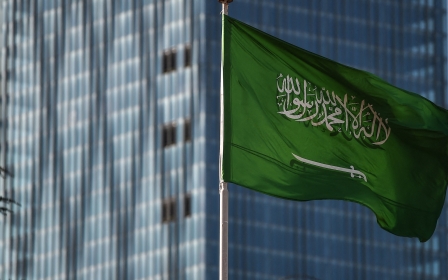From Captain Majid to Grendizer: Five Anime shows that defined Arab childhoods
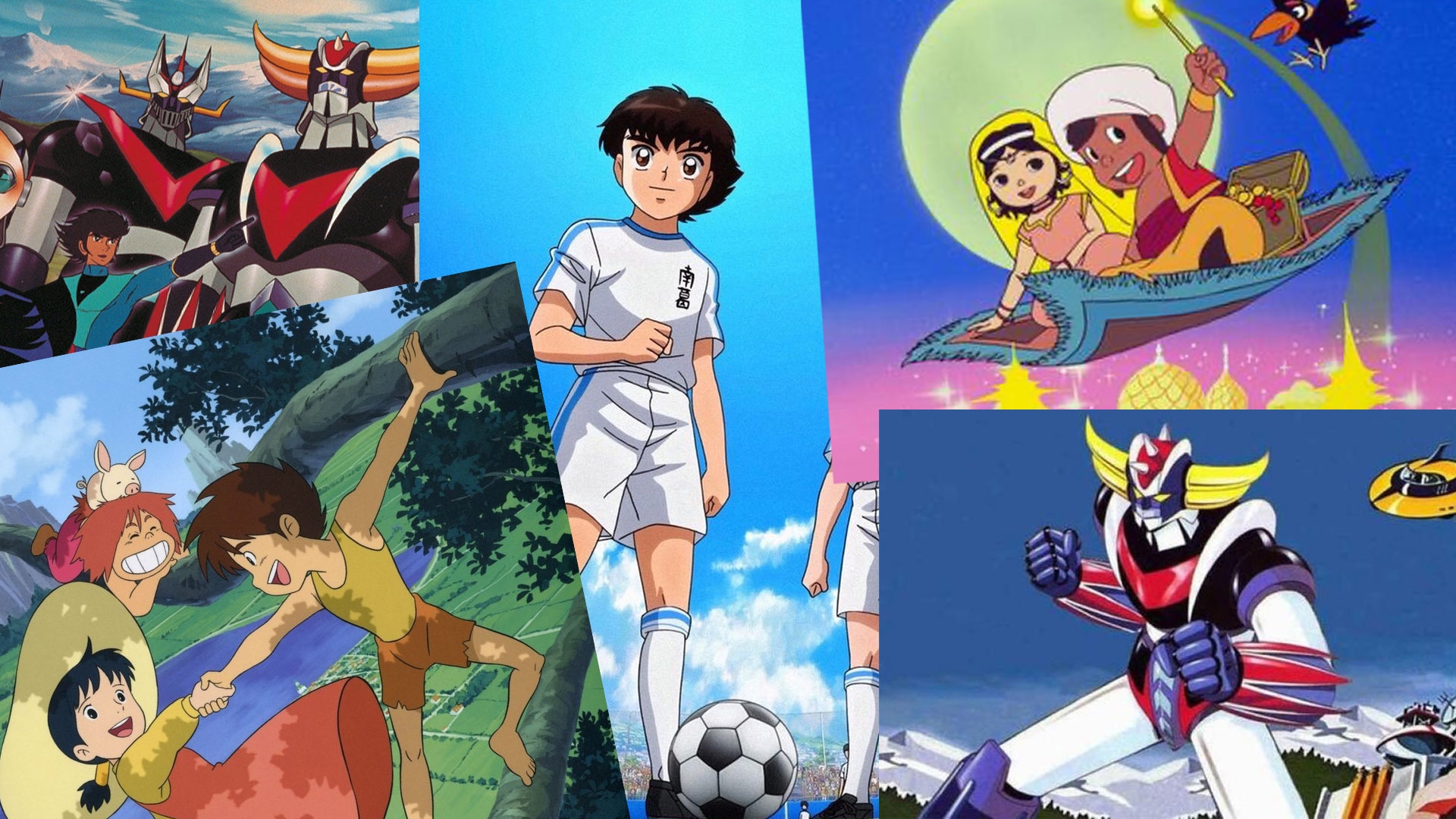
Earlier this summer, Saudi Arabia released its first jointly produced feature-length anime movie with Japanese studio Toei Animation.
The Journey, or Ar Rihlah, which took three years to make and is set in pre-Islamic Arabia, is a re-telling of the Aksumite invasion of Mecca by King Abraha, who ruled over southern Arabia or what is now Yemen.
New MEE newsletter: Jerusalem Dispatch
Sign up to get the latest insights and analysis on Israel-Palestine, alongside Turkey Unpacked and other MEE newsletters
The film brings together the country's cultural arm, the MiSK foundation, and one of Japan's most established animators, which has previously worked on shows such as Grendizer, Dragon Ball Z, and One Piece.
The co-producers also previously created the animated series, the Woodcutter’s Treasure (Kanz al-Hattab ) in 2018 and are working on Future's Folktales, set in the year 2050 in the new city of Neom.
It's not the first time Middle Eastern studios have delved into the world of Anime. Alter Ego Productions, based in Abu Dhabi, created the Torkaizer series in 2013. It follows an Emirati boy who travels to Japan after graduation and saves the world from an alien invasion.
Turkey has also developed its own homegrown anime scene, hosting 30 creative studios and releasing several feature-length films a year.
The trend in producing indigenous animations reflects the widespread appeal of Japanese animations, which stretches back decades.
Here Middle East Eye (MEE) looks at some of the shows that have made their mark in the region:
Grendizer
UFO Robot Grendizer, more commonly known as Grendizer, was one of the most popular anime series in the Arab world in the 1980s. The third installment of the Mazinger trilogy (preceded by Mazinger Z and Great Mazinger), this series was voted the second most popular anime in the Middle East in a 2019 YouGov poll.
Set in Japan, the story begins on a faraway planet called Fleed. The show’s main character, Duke Fleed, must leave his home when it comes under attack by neighbouring planet Vega.
Escaping to Earth, Fleed lands on Mount Fuji in Japan with his spacecraft Grendizer who can also transform into a giant robot. Fleed meets a kind scientist called Doctor Umon Genzo, who adopts him and renames him Daisuke.
But Daisuke’s arrival on earth does not guarantee his safety, he is tracked down by the alien King of Vega, and his Vegan army (not the dietary kind) is in hot pursuit. Here Daisuke and Grendizer battle to protect Earth while trying to keep their own alien identity a secret.
The 74-episode show, created by Japanese Manga artist Go Nagai in 1975, was said to symbolise Japan’s post-World War 2 position in the world. The show represented “the exorcism of Japan’s imperial past through its portrayal as a victim of extra-terrestrial violence (and) the celebration of Japanese technological advancement”, writes Marco Pellitteri, in his 2009 paper: Nippon ex Machina: Japanese Postwar Identity in Robot Anime and the Case of UFO Robo Grendizer.
Dubbed into classical Arabic by the Lebanese actor Jihad al-Atrash, the show first aired in the Middle East on Lebanon's Tele Liban in the 1980s. It was soon airing across the region.
“Everyone knew Grendizer” said the Lebanese illustrator, writer, and director Fadi Baki in an interview he gave to Lebanon's Daily Star. He called the cartoon “the glue that holds the Arab world together," before further explaining its importance. “There was fighting outside [during the Lebanese Civil War, in the 70s and 80s]. We were all kids, and this was pretty much using the same pan-Arab language – fighting off the invaders that were coming – but on TV, the good guys win.”
Jordanian Amer Mango recalls watching the show on Saudi state TV during family lunches with his two younger sisters.
However, Mango, a sports management consultant based in Japan, says his memories of the show are bittersweet as they are mixed with his recollections of the Iraqi invasion of neighbouring Kuwait and the subsequent Gulf War.
“We lived in Olaya, in Riyadh at the time, and whenever there was rocket fire from the Iraqis we would hear sirens and rush to the nearby shelters – so while we’d watch Grendizer fighting battles, we’d also feel a real battle going on,” he says.
The character makes a comeback this year in the form of a new video game.
Captain Majid (Captain Tsubasa)
Captain Majid is about an 11-year-old boy who dreams about playing professional football and eventually fulfills his ambition.
In the show, which was originally created in 1983, the lead character Tsubasa Oozora often comes up against 'baddies' on opposing teams but always finds a way to overcome them using his skills on the ball.
When the show was exported to the Middle East in 1990, Tsubasa was renamed Majid, apparently after the popular Saudi player, Abdullah Majed, who won Asian Footballer of the Year three times in 1984, 1985, and 1986. Majid was voiced by Syrian actress Amal Hawijeh, who has said people often still call her Captain Majid rather than Amal.
Like most anime, the show began life as a manga (comic strip). Its creator, Yoichi Takahashi said the 1978 FIFA World Cup was his inspiration.
In 2017, Captain Majid's popularity was still strong and inspired the first manga comic book to be translated from Japanese into Arabic and then distributed across the Middle East, with free copies donated to Syrian refugee children.
More recently in 2020, a new series of the show premiered on MBC 3.
Adnan wa Lina (Future Boy Conan)
This 26-part series from the 1970s, originally called Future Boy Conan, was set in a post-apocalyptic dystopia.
Based on the 1970 story The Incredible Tide by American sci-fi writer Alexander Key, the show's opening gives a brief history explaining the setting. “World War III erupted in 2008 after warring parties used ultra-magnetic weapons that are far more dangerous than traditional weapons and this brought about destruction in land and sea.”
The show was Japanese animator Hayao Miyazaki's first production with Nippon Animation. He went on to co-found Studio Ghibli and produced classics like My Neighbor Totoro (1988) and Spirited Away (2001).
The Arabic version of the show was renamed for the two main characters - Adnan (Conan) and Lina (Lana).
Dubbed in Kuwait and voiced by local actors, the show follows Adnan (aged 11) and Lina's journey across different islands created after the war. The pair try to outsmart other survivors of the conflict and try to evade the people responsible for the destruction of Earth, who are also plotting to rule what remains.
Using the powers of telepathy and teleportation, and their ability to communicate with animals, the two friends manage to remain several steps ahead of their enemies.
"The scene when Adnan and Lina fall from a tower still sticks with me," says Mohammed Ramadan, 42, who grew up watching the shows in Amman, Jordan in the 80s.
In the iconic scene, Lina has been captured and put in a tower. As Adnan tries to save her, he holds her in his arms and balances along the edge of the tower's turrets but is eventually forced to jump, with a trusting Lina.
"I still watch the shows today and have introduced them to my own kids, because of their classic storylines and relatable characters. When I watch them now, it always feels as though I'm watching them for the first time, they never grow old," says Ramadan.
The show was re-aired on Japanese broadcaster NHK in 2020, and the Arabic episodes have been available on YouTube since 2016.
Sindibad (The Adventures of Sindbad)
Based on the story found in One Thousand and One Nights (Alf Laylah wa-Laylah), Sindibad was popular in the early 80s.
Known as Arabian Naito: Shindobatto no Bōken in Japanese (The Adventures of Sindbad), in the Arab world it was colloquially known as Sindibad.
The story follows a young Sindbad - the son of a merchant - as he explores the world, meeting other popular children's storybook characters, like Ali Baba, along the way.
“As a child, I thought that the anime series Sindibad (Sinbad) was a genuine reflection of Arab and Muslim culture and tradition”, says Omar Al-Ghazzi, assistant professor of Media and Communications at the London School of Economics (LSE).
“But when I saw one episode on YouTube as an adult, as part of my research, I noticed that in a scene supposedly showing Muslim prayers, Muslims are depicted as kneeling and then raising their arms to the sky and not actually praying in the way practising Muslims do.
"A lot of the depictions in Sindibad are, in fact, a product of a Japanese imagination of Arab and Muslim cultures."
Al-Rajal Al-Hadeed (Dinosaur War Izenborg)
Produced by Tsuburaya Productions, Dinosaur War Izenborg aired from 1977 to 1978 on TV Tokyo and was set in the future - 1986 - at a time when dinosaurs try to reclaim the earth.
Often referred to as just Izenborg, the concept was unique at the time, using the Japanese art of tokusatsu, or live-action scenes, combined with animation. The plot revolves around Ururu, the leader of the dinosaurs, and his attempts to reclaim earth from the humans and restore reptile rule.
“I would watch this endlessly," says Amer Mango. "There were two lead characters Kamal and Lamees, they are brother and sister and are fighting enemy giant dinosaurs.”
“But in order to fight the dinosaurs successfully, Tachibana Ai and Tachibana Zen (Kamal and Lamees) need to merge their powers and connect their robotic body parts, which were fitted after they were injured in a massive explosion, and become Izenborg – a robot-like action character."
The show's popularity led to a special one-off TV documentary being released in 2017, The Return of Izenborg that was aired on Spacetoon's in the Middle East and local channels in Japan.
This article is available in French on Middle East Eye French edition.
Middle East Eye delivers independent and unrivalled coverage and analysis of the Middle East, North Africa and beyond. To learn more about republishing this content and the associated fees, please fill out this form. More about MEE can be found here.


